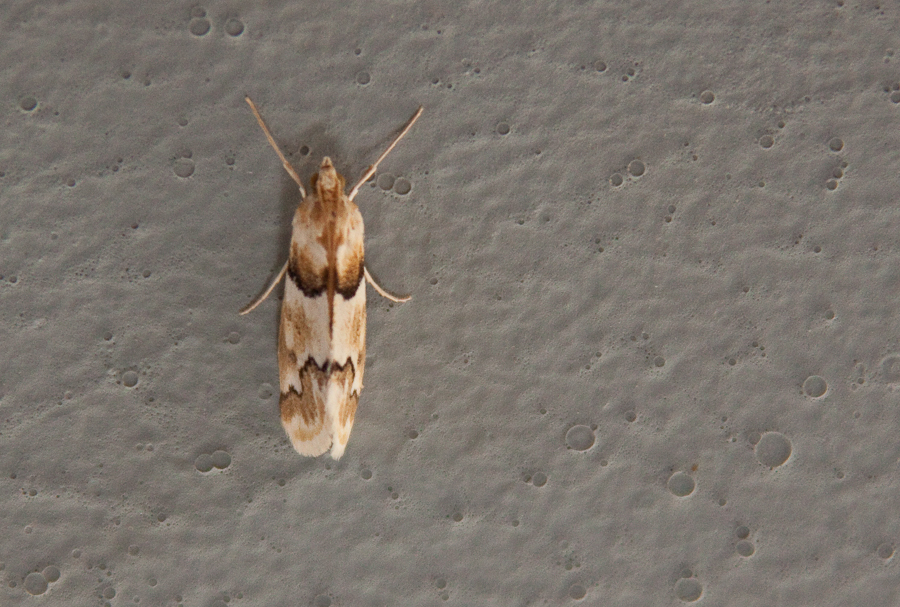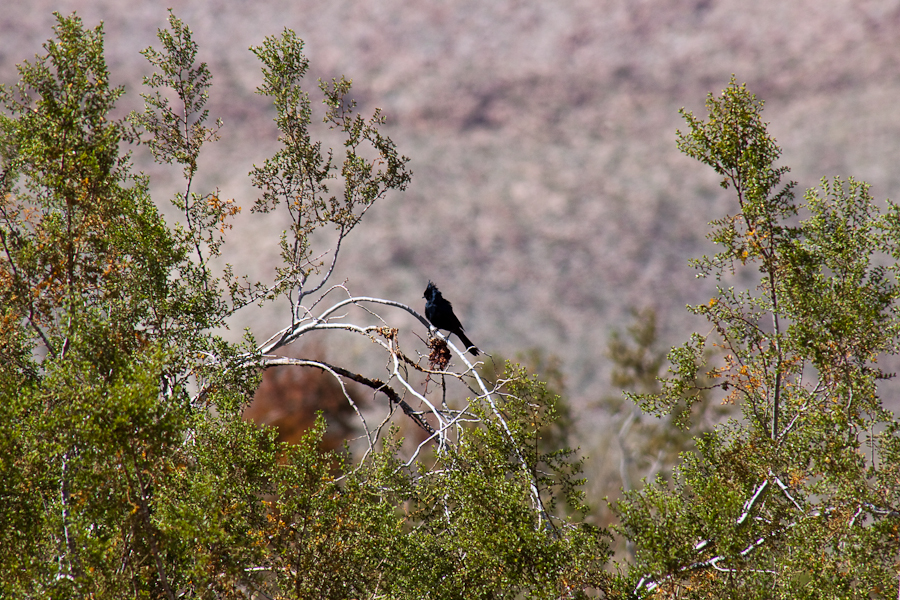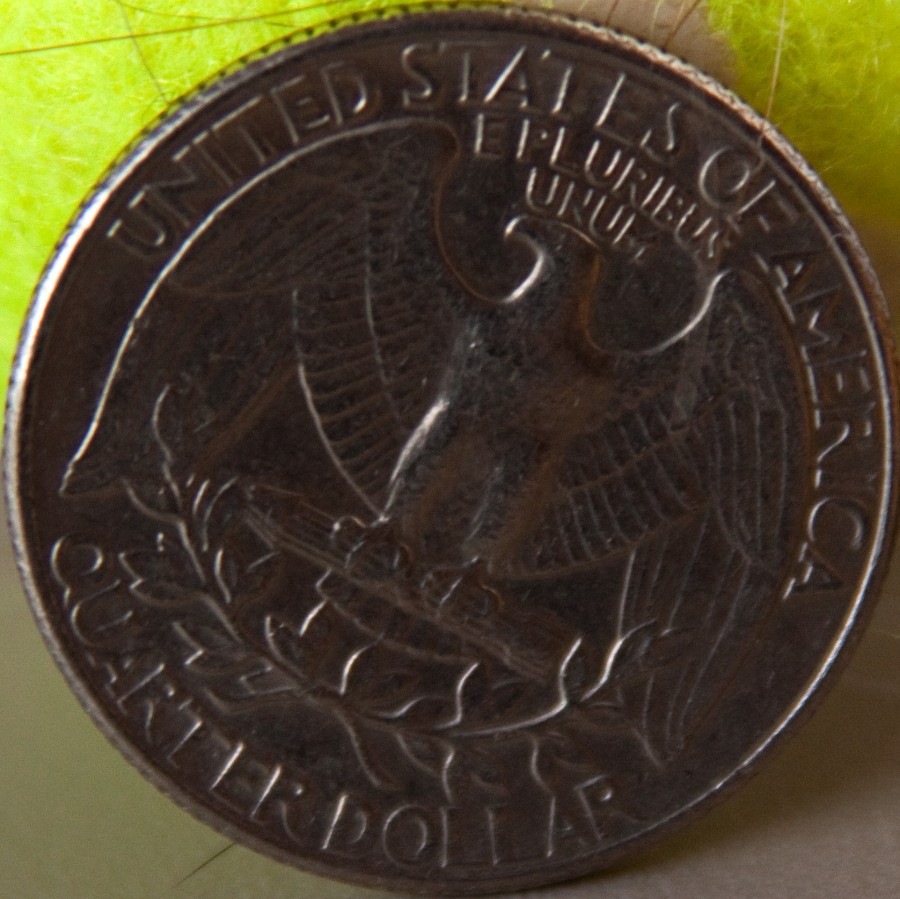Moth Monday: Many-spotted Angle Moth
March 23rd, 2009Many-spotted Angle Moth, Hodges #6395, Digrammia irrorata
William R. Mason Regional Park, 2008-03-05
Many-spotted Angle Moth, Hodges #6395, Digrammia irrorata
William R. Mason Regional Park, 2008-03-05
Details and pictures to follow but here’s the day list:

Pseudoschinia elautalis, Hodges#4828
I found this one in the shower at Agua Caliente County Park, which is built at hot springs in the desert. Kudos to John Lee for the ID.
Sunday, 3/1/09, Beth and I had coffee on the patio of our hotel, and then played a little tennis before it got too hot. The hotel grounds were surprisingly birdy with numerous great-tailed grackles and White-winged Doves (a California bird) making quite a racket. I also spotted one Verdin and an American Kestrel. After tennis, we headed out to the Anza-Borrego Desert State Park Visitor’s Center and enjoyed some more Verdins, Costa’s Hummingbirds, and Black-chinned Sparrows in their garden. We also followed the path to the Palm Canyon campground, where we found some quail, likely California. After brunch at a Mexican restaurant, we drove back down the Yaqui Pass Road and stopped at the Tamarisk Grove Campground one more time. This time there were even more moths, as well as a Bewick’s Wren.
We had come up through the mountains on 78 through Julian, but we decided to take a slightly more roundabout route home along the Great Southern Overland Stage Road to see some different scenery, avoid the winding mountain roads, and check out some of the parks along the way. Our first stop was at the Vallecito County Park at 1:00 P.M. By this point it was quite hot, and most birds had retired for the day. Beth stayed in the air conditioned car while I looked for the few birds that were still active in the heat. White-winged Doves were doing their Barn Owl imitations. Costa’s Hummingbirds were buzzing. Common Ravens were croaking. House Finches and Verdins were cheeping. Phainopeplas were everywhere (relatively speaking).

And after walking around the campground for 20 minutes or so, a small gray and black bird buzzed by. I got my binoculars on it, and for sure it was a gnatcatcher. It looked a lot like a California Gnatcatcher, but California Gnatcatchers are coastal birds of the sage scrub. Out here in the desert, it could only be a Black-tailed Gnatcatcher, #464. I followed tit form bush to bush, and got some good looks but was never able to get a photo. Maybe next time.
Read the rest of this entry »
By the time we left the California Overland Tour, the sun was setting; but we decided to drive through town on the way back to the hotel. (Not a lot else to do in Borrego Springs after dark.) Beth spotted a church off in the distance, and wanted to check it out. In fact, she spotted several. About four are lined up in a row along Church Lane. However we parked at the Episcopal Church and walked around a bit. House Finches and Lesser Goldfinches were both present in some small abundance.
As Beth was checking out the labyrinth, I was walking around the other side of thee church and spotted another small bird in the back of a small but bushy tree. I thought it was just another finch, but after putting my binoculars on it, I decided it was something else. A kinglet maybe, or perhaps a Gnatcatcher. A Gnatcatcher out here could well be a Black-tailed Gnatcatcher, which would be a life bird for me. So I’m looking closely at the tail, trying to figure out if it’s more white or dark underneath, all the while the bird is moving around in the back of a tree I can barely see in the fading light.
Then all of a sudden the bird turns into my field of view, and I’m looking at its head instead of its tail. Damned if the head isn’t yellow. Gnatcatchers don’t have yellow heads, but Verdins do. The bird flies off, and the light was far too gone to hope for a photo, even if it had stayed. However, the yellow head is pretty distinctive, #463, Verdin.
The next morning we did find several more Verdins at the Anza-Borrego Desert State Park Visitors center, this time in light good enough for a photo. Here’s one:

However the lifer was at St. Barnabas Church.
Allegedly my Tamron zoom lens has a 1:3 macro capability. That is, at maximum telephoto and minimum focusing distance (0.49 meters) objects should be imaged on the sensor at 1/3 their actual size. Let’s check that out.
The sensor in a Canon EOS 50D is 22.3mm by 14.9mm. A U.S. quarter has a a diameter of 24.26 mm. I extend the lens to 300mm and switch it to manual focus. Then I set the focus on the lens to 0.49m (the minimum). I move the camera until the quarter comes into focus and snap.

At 1:3 the quarter should occupy 24.26/3 mm == 8.087 mm. 8.087 mm/ 22.3mm = 0.36, just a tad more than a third the width of the picture. Actually it could be a little smaller than that if I didn’t shoot it head on. The raw image is 4752 pixels wide, so the quarter should be about 1710 pixels wide. Let’s open it up in Photoshop and find out.
Read the rest of this entry »